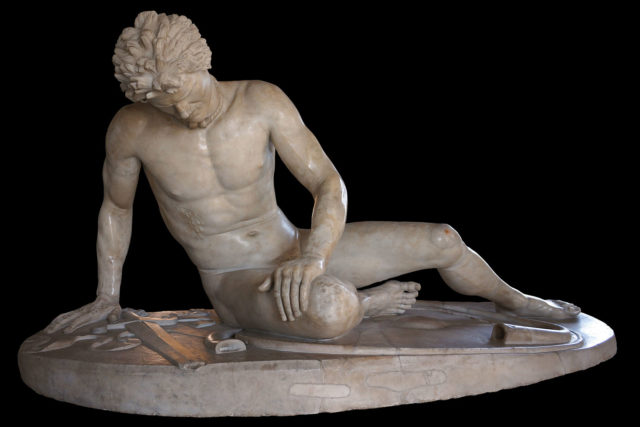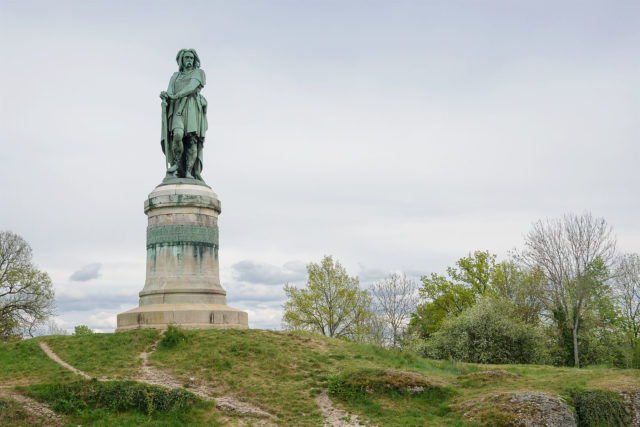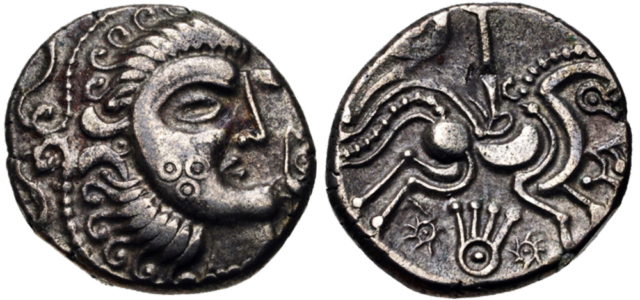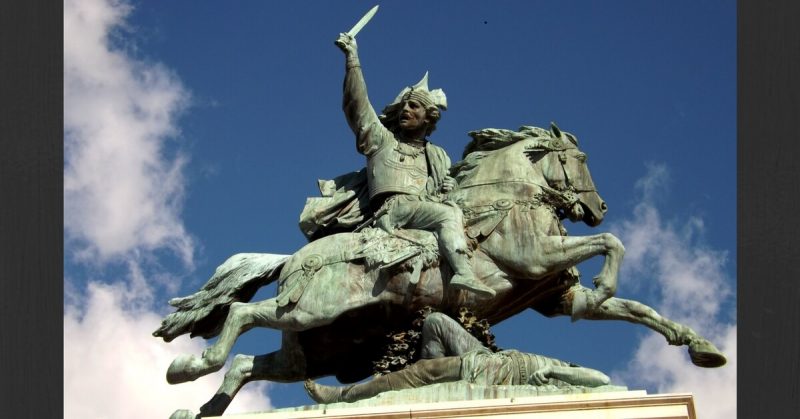“The year is 50 BC. Gaul is entirely occupied by the Romans. Well, not entirely… one small village of indomitable Gauls still holds out against the invaders.”
So begins the Asterix comics by René Goscinny and Albert Uderzo. For many people, these comics were an introduction to the history of ancient Gaul. With their magic potion, comically named Romans, and cartoonish violence, they were a long way from the reality of the times.
Although in some ways, the real ancient Gauls were a lot like Asterix and Obelix. Conquered by Julius Caesar in the 50s BC, the Gauls showed a remarkable spirit and a courageously independent fighting style reflected in Goscinny and Uderzo’s creations.
Here is a guide to the reality of warfare among the ancient Gauls, with all its cartoonish flare and grim reality.
Small Scale Fighting
When the Gauls fought each other, it was usually on a small scale. Tribes raided one another for wealth and the chance to assert their dominance. Plunder that could be easily transported, such as gold or cattle, were taken home by the victors. Control of territory and leadership of tribes seldom changed as a result. It is a tribute to the skills of Vercingetorix that he united so many Gauls in the face of Roman aggression.

A Network of Alliances
The most powerful Gallic tribes were those who could assert their military influence over a wide area. Some tribes formed alliances with each other to provide more men over a wider area. In the case of the Sequani, they negotiated outside Gaul and made agreements with German tribes.
A Warrior Elite

In most circumstances, warfare was confined to an elite social class brought together under the leadership of a chieftain. Similar to the early Roman republican armies or the raiding bands of the Dark Ages, these were men whose social status was tied to their strength of arms, their role in defending their communities, and their control over political violence.
Larger scale Gallic armies, such as those Caesar fought, may have included farmers who were normally exempt from the duty to fight. It is hard to be certain, as the Gauls left no written accounts, and Caesar was prone to exaggeration to make himself look good.
Intimidating Warriors
Tall and strong, Gallic warriors were intimidating to fight. Roman writers of the era noted how much shorter their countrymen were than the Gauls. These were powerful opponents with an impressive reach.
Fighting with Abandon
Like Asterix and Obelix, the Gauls tended to fight with wild abandon rather than caution and discipline. The Romans saw them in fearful terms, as savages untouched by dread or timidity.

An Individualistic Way of War
Gallic warfare was not built around tightly packed formations or disciplined drill such as the Roman legions used. Instead, it centered on the individual and their battlefield prowess. Fighting in loose formations, the Gauls were able to use their unique skills and strengths to the utmost, the space giving them the opportunity to show off.
Long Swords
Most Gauls fought with long swords well suited to slashing and hacking. When fighting one on one, this gave them an advantage over opponents like the Romans who carried shorter weapons. Gallic swords had greater reach and when swung could gain more momentum.
The Romans countered this with their tight formations, which kept them alive long enough to get in close and stab with their short swords. Deprived of space, the Gauls found it difficult to wield their swords.
Wooden Shields
Like the Romans, Gauls used large rectangular shields to protect themselves from arrows and close fighting. They did not curve around as a Roman shield did but would have offered the same protection. A bronze shield found in the River Thames in London is similar to those carried by the Gauls but may have been ceremonial, unlike the many wooden and hide shields which have rotted over time.
Accounts of Roman javelins piercing these shields indicate that some were quite thin. Javelin attacks could counter the defensive advantage of a shield. Also, a protruding spear could weigh a shield down or render it unwieldy, making it easier to hit the bearer.

Armor or Nothing
One way in which Asterix and Obelix differ from their real counterparts is how they dressed for battle. Fighting the Romans in ordinary clothing was the last thing a Gallic warrior would do if he could avoid it.
When dressing for war, the Gauls tended to go to two extremes. Some went into battle naked, showing off their bodies and their fearlessness in the face of man and nature. Others dressed in elaborate armor, displaying their wealth and status. Their armor consisted of chainmail shirts and iron or bronze helmets, a combination which made these warriors look similar to their Roman foes. Both approaches achieved the same goal – making an individual stand out so they could be seen.
Tough Cavalry
The wealthiest Gauls equipped themselves with horses and to fight as cavalry. Although they did not have stirrups, the design of their saddles created a secure seat from which to thrust with a spear or hack with a sword. Skilled riders capable of coordinating with the infantry, they were especially effective against the weaker Roman auxiliary cavalry.
Vulnerable on the Defensive
Lacking the discipline of the Roman legions, Gallic armies were vulnerable to counter-attacks from their opponents. They needed to overcome their enemy in the initial charge. If not they would not have had a strong formation to hold their ground, fend off flanking maneuvers, or make an orderly retreat.
This was their downfall against the Roman legions, which could contain them long enough to bring in cavalry or a counter-attack on their flank.
Source:
Kate Gilliver, Adrian Goldsworthy and Michael Whitby (2005), Rome at War: Caesar and his Legacy.
